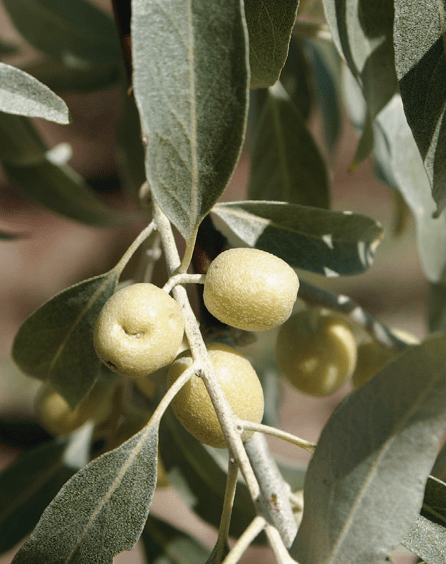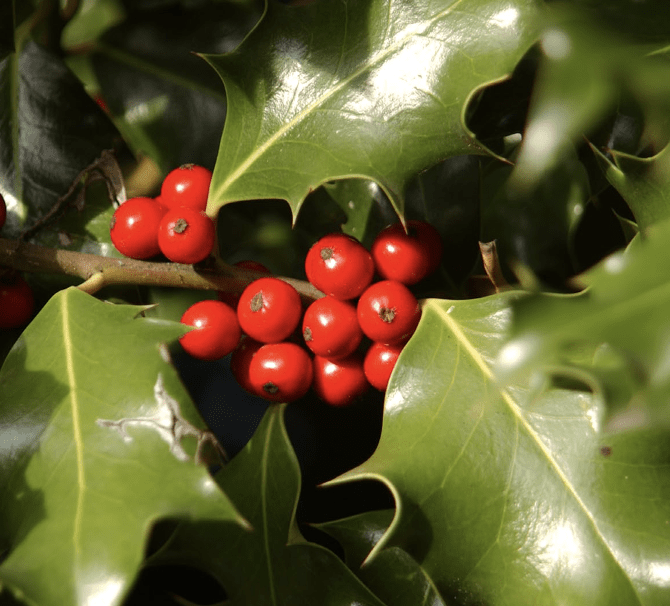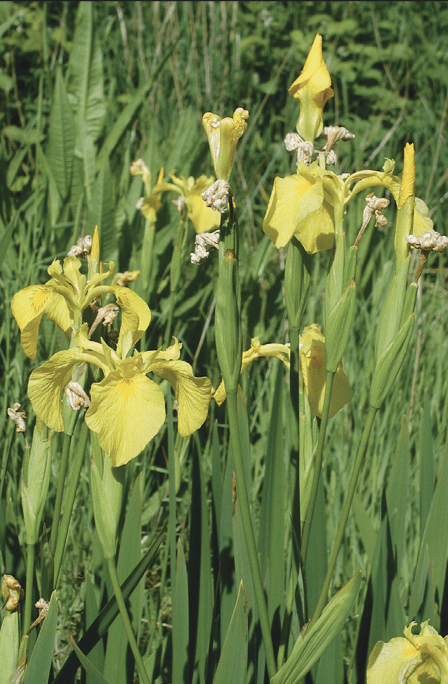Invasive nonnative plants are a serious subject for gardeners, farmers, the general public and land managers. Understanding invasive species and how to control them is becoming increasingly important for gardeners.
What is an invasive species?
An invasive species is an organism that is not native to the local ecosystem and whose introduction causes, or is likely to cause, economic or environmental harm or harm to human health. Human actions are the primary means by which invasive species are introduced and spread. For example, invasive plants may be introduced to an ecosystem through un intentional escape from a garden or farm field. Invasive animals might be introduced by domesticated fish escaping a pond or aquaculture facility. An invasive disease may be introduced by an infected insect traveling in freight to a country where the disease was not previously present.
An invasive plant can also be referred to as a noxious weed. State and federal agencies designate particularly undesirable invasive plants as noxious weeds. In Oregon, officially designated noxious weeds are listed by the Oregon Department of Agriculture. Keep in mind, however, that an invasive plant may not be listed as officially “noxious,” even if it causes harm. It often takes time for governmental agencies to catch up with the public’s perception of a harmful plant or animal.
What do gardeners have to do with invasive species?
Biologists estimate that somewhere between 30% and 80% of the total invasive plant species introduced to the United States originated as garden plants. According to one estimate, of the approximately 60,000 different types of plants sold in mail-order or online catalogs and nurseries, at least 3,000 will escape cultivation and become invasive. Some small percentage of these plants will become locally, regionally or even globally threatening to native plants and animals as well as humans. As new plant species are regularly introduced by the nursery industry and gardeners continually seek opportunities to experiment with new and more exciting plant varieties in their own landscapes, horticultural-origin biological invasions are sure to continue.
Why should you care?
In the United States, invasive species cost consumers, governments and industry approximately $143 billion a year in control and losses due to the harm these plants and animals inflict upon agriculture, the environment and human health. In Oregon alone, 21 officially designated noxious weeds cost approximately $125 million a year in production losses, fire damage and control, according to a 2009 study. Researchers have determined that biological invasions have contributed to the listing of almost half of all the 1,000 plants and animals protected under the U.S. Endangered Species Act. From a gardener’s perspective, invasive plants pose many challenges to installing and maintaining diverse and sustainable landscapes and gardens.
The biology of plant invasions
Nonnative plant invasions usually involve three distinct phases:
- Introduction. The first phase involves the introduction of a plant to its new environment. This is the point at which gardeners are directly involved in the often deliberate but unintentional introduction and establishment of invasive species, as they bring the new plant into their gardens and perhaps share it with friends or neighbors through plant or seed exchange. During this phase, the plant population may experience a lag time in its reproductive ability, in which it will not appear to move out of a controlled situation such as a garden, forest, or pasture. From a gardener’s perspective, this means that the plant is “well behaved” and does not appear to be an overly aggressive grower in the garden. In some cases, this lag period can persist for decades before the plant begins the next phase.
- Escape. During the second phase, an escaped plant appears to jump out of the garden into the neighboring landscape. Often this means a plant has overcome barriers that have kept it in check and prevented its spread. These barriers may include temperature, moisture, pests, or competition from other plants.
- Invasion. Eventually, the plant population shows signs of invasion. During this phase, the plant rapidly reproduces by sexual means (seeds) or asexual means (roots/rhizomes or creeping stems) and may spread over large distances.
Gardeners have control over the introduction and sometimes the escape phases of a new biological invasion. This means that gardeners should evaluate their potential plant choices before they introduce them into their garden.
Evaluating a plant's invasiveness
Whether visiting a nursery, plant sale, or garden center or browsing a catalog, gardeners are often faced with an array of choices when selecting something new for their gardens. While many horticultural plant outlets do not evaluate and do not advertise the potential invasiveness of their wares, responsible consumers can become educated and informed prior to making a purchase.
Several websites are available for determining whether or not a plant is a known invasive or has the potential to become invasive (see below).
Sometimes the evaluation of invasive potential can be done by watching plants grow in the garden. If this approach is used, gardeners must exercise responsibility over their “experiments.” Once a plant starts to show an ability to escape the designated garden or landscape boundaries, it is the gardener’s responsibility to deadhead, trim, or otherwise prevent the plant from escaping from its place in the garden.
If someone gives you a start or seed of a plant from their garden, ask some questions before you accept their generosity. Where did the plant come from originally? Is it a native plant? How successful was the plant in their garden? Does the plant produce many seeds that sprout more than a few feet away from the original plant? If you suspect the plant may be invasive, don’t accept the gift. Encourage your generous gardening friend to replace the plant with a less invasive variety.
What are the alternatives?
Some of our beautiful and useful Pacific Northwest native plants are the safest alternatives to known or potentially invasive plants. Many Pacific Northwest native varieties are pleasing to the eye and also attract wildlife.
Pacific Northwest native plants have made significant inroads into the nursery trade in recent years. Some nurseries specialize in native species (a list of native plant nurseries in Oregon is available at Plant Native.) You can also inquire at your own local nursery about what native plants they carry or can order. Even garden centers at big box stores will carry or can order native alternatives to a host of potentially invasive plants. The more people request native plants, the more the nurseries and garden centers will respond by making available a greater selection of native plants.
For more information on noninvasive plants and native plant gardening in the Pacific Northwest, see Gardening with Oregon Native Plants West of the Cascades (EC 1577).
What if you already have invasive species in the garden?
There are several actions you can take to immediately deal with invasive plants in your garden. First, remove those you can and replace them with suitable noninvasive plants (see section above on native plant alternatives).
A conscientious gardener will take steps to completely remove a plant that shows invasive tendencies. Remember to educate past or future recipients of your plants, cuttings, roots, or seeds to remove the plant and manage their garden to ensure that the plant does not become invasive in your community.
If you have an invasive species that spreads by means of seeds, such as purple butterfly bush (Buddleia davidii), aggressively deadhead the plant. Be sure to remove the spent flowers well before seeds have time to mature. Although you may be tempted, do not compost the waste from invasive plant removal. Dispose of invasive plant materials by bagging and placing them in the garbage. Most home compost methods cannot kill the seeds or plant parts that will ultimately continue to spread the plants unless the compost reaches uniformly high temperatures (such as 140°F). In general, do not dispose of invasive plant seeds or debris in yard or green waste unless instructed by your local waste management company.
Use a combination of chemical and cultural methods to manage plants before they get out of control in your landscape. A list of cultural and chemical controls is available in the Pacific Northwest Weed Management Handbook. Refer to your local Oregon State University Extension Service office for additional advice.
What about water gardens?
Invasive aquatic plants and animals often generate more concern than land-based invaders because aquatic species use waterways to quickly distribute themselves downstream. For example, Pacific Northwest water gardeners have frequently grown yellow flag iris (Iris pseudacorus), which has become a difficult-to-eradicate noxious weed.
If you have a water garden such as a pond, be sure to keep its contents away from natural streams, lakes or bays. Don’t dump soil, gravel, wood, plant materials, or water from the garden into a local water body. Rinse or clean all new aquatic plant introductions thoroughly to remove aquatic hitchhikers such as snails. Put snails or other aquatic hitchhikers in the trash.
Spread the word, not the weed
There is a saying among weed managers: “Spread the word, not the weed!” You too can help spread the word to your fellow gardeners. You can also use your purchasing power to encourage nurseries to do the right thing and not sell potentially invasive plants to the public. Gentle reminders are usually more useful than preaching. Once a plant is listed a noxious weed, however, it is illegal to sell or otherwise willingly move the plant from one location to another.
Fortunately, home gardeners are in a position to directly impact the environment for the better. They can do this by choosing plants that are not invasive, by managing plants in their garden to prevent their invasive spread, and by working with others to become educated about preventing the introduction and spread of invasive species.
For more information
California Horticultural Invasives Prevention. 2010. PlantRight: Keep Invasive Plants in Check. San Francisco, CA: Sustainable Conservation.
Cool, S., T. DeMarsh-Dodson, and A. Halpern. 2008. Garden Wise: Non-Invasive Plants for Your Garden— Eastern Washington Guide. Olympia, WA: Washington State Noxious Weed Control Board.
Halpern, A., S. Cool, and T. DeMarsh-Dodson. 2008. Garden Wise: Non-Invasive Plants for Your Garden— Western Washington Guide. Olympia, WA: Washington State Noxious Weed Control Board.
McMahan, L. 2022. Gardening with Oregon Native Plants West of the Cascades. EC 1577. Corvallis, OR: Oregon State University Extension Service.
Oregon Department of Agriculture. 2011. Noxious Weed Control. Salem, OR: Plant Division, Oregon Department of Agriculture.
Oregon Public Broadcasting. 2011. Oregon Invasive Species Hotline. Portland, OR: Oregon Public Broadcasting.
Oregon Public Broadcasting. 2011. The Silent Invasion. Portland, OR: Oregon Public Broadcasting.
Oregon State University Extension Service. 2011. Pacific Northwest Weed Management Handbook. Corvallis, OR: Oregon State University Extension Service.
United State Department of Agriculture. 2011. National Invasive Species Information Center. Beltsville, MD: United States Department of Agriculture National Agricultural Library.
United States Department of Agriculture. 2011. PLANTS Database. Washington, DC: United States Department of Agriculture Natural Resources Conservation.
References
Cusack, C., M. Harte, and S. Chan. 2009. The Economics of Invasive Species. ORESU-G-09-001. Corvallis, OR: Oregon Sea Grant.
Niemiera, A.X., and B. Von Holle. 2009. Invasive Plants— A Horticultural Perspective. Virginia Cooperative Extension Publication 426-080. Blacksburg, VA: Virginia Cooperative Extension.
Pimentel, D., R. Zuniga, and D. Morrison. 2005. Update on the environmental and economic costs associated with alien-invasive species in the United States. Ecological Economics 52: 273-288.






